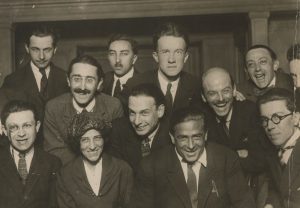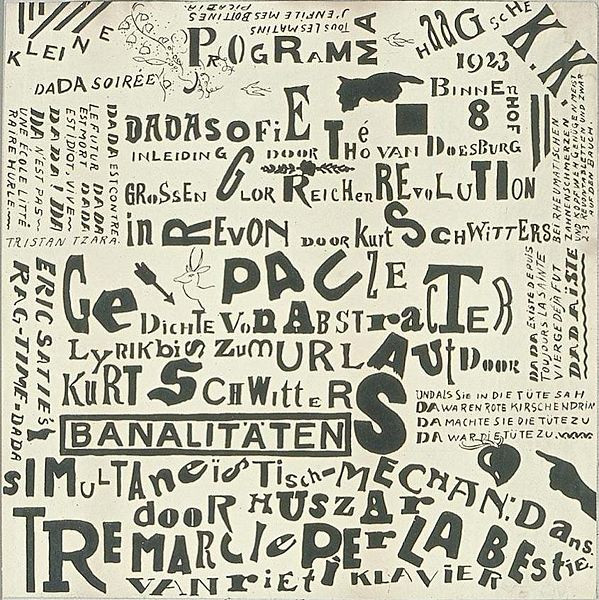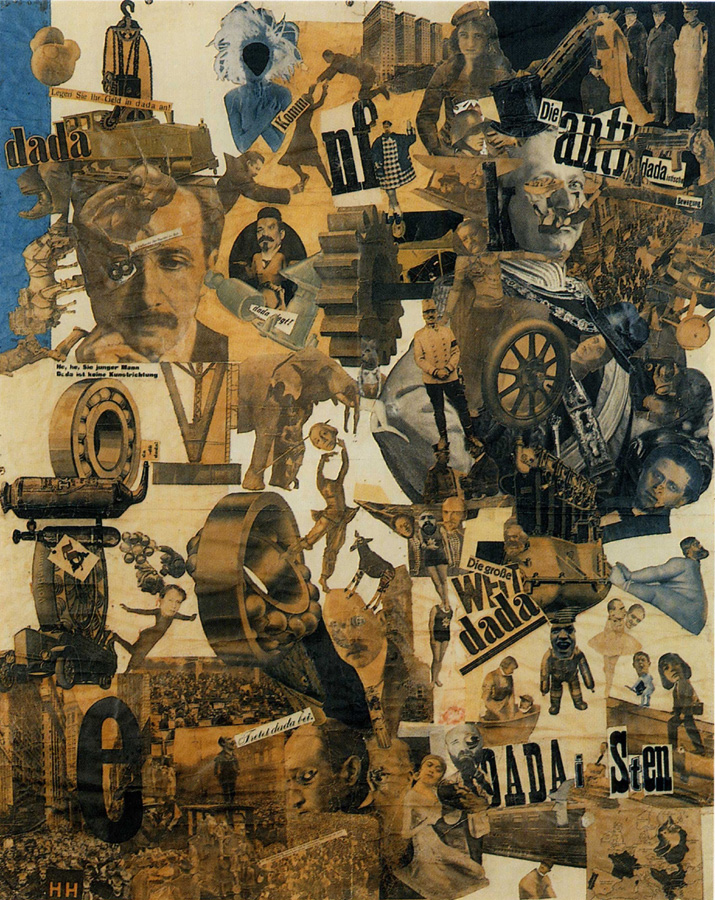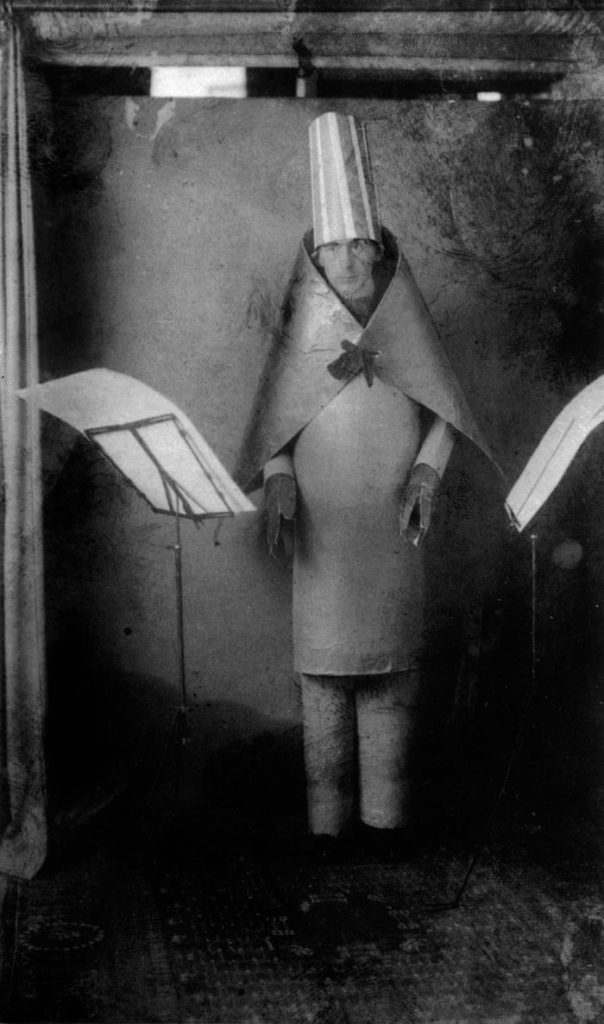Dada was an art movement formed during the First World War in Zurich, reacts to the horrors of the war. Art, poetry, and performances produced by dada artists were often satirical and meaningless.

Image source: https://en.wikipedia.org/wiki/Dada#/media/File:Dada_artists,_group_photograph,_1920,_Paris.jpg
Dada was an artistic and literary movement born in Zürich, Switzerland. It arose as a reaction to World War I and the nationalism that many thoughts led to the war. Influenced by Cubism, Futurism, Constructivism, and Expressionism, its production has been diversified, ranging from performance art to poetry, sculpture, photography, painting, and collage. Dada’s aesthetic, which is based on mocking materialistic and nationalist attitudes, has proven to have a great influence on artists in many cities, including Berlin, Hanover, Paris, New York, and Cologne. With the emergence of Surrealism the movement dissolved, but the ideas from which it arose have become the cornerstones of various categories of modern and contemporary art.
Why “Dada”?

Image source: https://commons.wikimedia.org/wiki/File:Theo_van_Doesburg_kleine_Dada_soir%C3%A9e.jpg
There is no unanimity on the origin of the name of the movement; however, a common story is that the German artist Richard Huelsenbeck slipping a random letter opener into a dictionary, which landed on “dada”, a colloquial French term for a riding horse. Others note that it may indicate the first words of a child, recalling an infantilism and nonsense that appealed to the group. Still, others speculate that the word may have been chosen to evoke a similar meaning (or no meaning at all) in any language, reflecting the movement’s internationalism.
The origin of Dadaism

Image source: https://en.wikipedia.org/wiki/Hannah_H%C3%B6ch#/media/File:Hoch-Cut_With_the_Kitchen_Knife.jpg
The goal behind the Dada art movement was to answer to the modern age. Reacting against the rise of capitalist culture, warfare, and the concomitant degradation of art, artists in the early 1910s began to explore new art, or “anti-art”, as described by Marcel Duchamp. To contemplate the definition of art, they experimented with the laws of chance and the object found. Theirs was an art form backed by humor and cunning twists, although the Dadaists were asking a serious question about the role of art in the modern era that became even more pertinent as the reach of Dada art spread – by 1915 its ideas had been adopted by artists in New York, Paris, and beyond – and while the world was immersed in the atrocities of the First World War.
The ready-made

Image source: https://en.wikipedia.org/wiki/File:Marcel_Duchamp,_photo_Man_Ray,_391_n._13,_July_1920.jpg
The readymade was one of the most iconic forms of Dadaist expression and was a sculptural form perfected by Marcel Duchamp. In these works, Duchamp repurposed objects found or manufactured in the factory in installations. In Advance a Broken Arm (1964), for example, it involved the suspension of a snow shovel from tunnel support; Fountain (1917), arguably Duchamp’s most recognizable readymade, incorporated a mass-produced ceramic urinal. These objects were taken out of their intended functional space and elevated to the level of “art,” in this way Duchamp mocked the art establishment while asking the viewer to seriously contemplate how we appreciate art.
Dada in other arts
As Duchamp’s readymades exemplify, the Dadaists and the Dada movement did not hesitate to experiment with new media. Jean Arp, for example, explored the art of collage and the potential for randomness in its creation. Man Ray has also played with the arts of photography and airbrushing as practices that pushed the artist’s hand away by incorporating collaboration with a possibility. The Dadaists have also probed the literary and performance arts. Hugo Ball, for example, the man who wrote the 1916 unifying manifesto of Dadaism, investigated the liberation of the written word. By freeing text from the conventional constraints of a published page, Ball played with the power of meaningless syllables presented as a new form of poetry. These Dadaist poems have often been turned into performances, allowing this network of artists to move easily through the media.

Image source: https://en.wikipedia.org/wiki/Hugo_Ball#/media/File:Hugo_Ball_Cabaret_Voltaire.jpg
Info sources:
https://www.tate.org.uk/art/art-terms/d/dada https://magazine.artland.com/what-is-dadaism/ https://www.theartstory.org/movement/dada/ https://en.wikipedia.org/wiki/Dada
